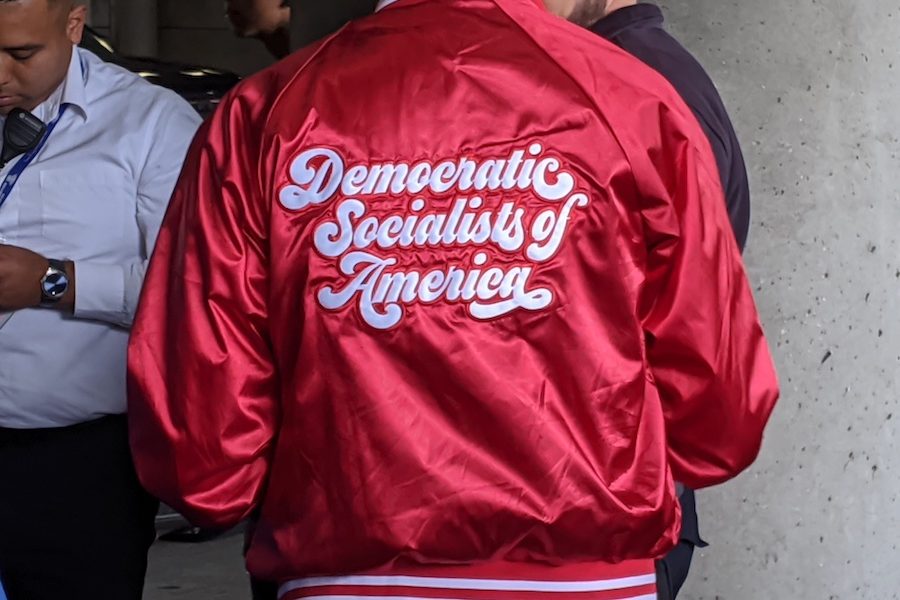Former Leaders of SDS, Meet the Current Members of DSA
The authors of “An Open Letter to the New New Left From the Old New Left” failed to grasp several things about the Democratic Socialists of America.
Joel Bleifuss

As the Trump administration abdicates its responsibility for mass testing and contact tracing, tens of thousands of Americans — disproportionately working-class and people of color — are dying.
Meanwhile, America’s young people — loaded with college debt, inadequate health insurance and bleak job prospects — confront an increasingly dystopic future. The pandemic is, of course, not the only threat; climate change is poised to wreak unimaginable havoc. Young people rightly think that the free market has failed to provide solutions to both crises.
Inspired by Bernie Sanders, many millennials have turned to democratic socialism. In one of the most hopeful political developments in decades, the Democratic Socialists of America (DSA) has seen its membership grow from 6,500 in 2014 to 66,000 today. (In These Times was founded by members of the New American Movement and the Democratic Socialist Organizing Committee, which merged in 1982 to form DSA.)
So it is disconcerting to read an open letter in The Nation, signed by 81 former leaders of Students for a Democratic Society, that condescends to tell DSA youth to “face facts.” Those facts being: “A common effort to unseat [Trump] is our high moral and political responsibility.” The signatories are “gravely concerned.” They worry that some Bernie supporters have refused to endorse Biden, “including the leadership of Democratic Socialists of America.”
Before being so quick with the pen, these members of the “Old New Left” — as they describe themselves — should have considered how DSA operates, what its members do and the considerations that inform its approach.
DSA is a democratic organization. At the most recent convention, delegates voted to only endorse candidates who openly identify as socialists, like Bernie Sanders.
But the group’s stance on 2020 does not mean DSA members will be sitting out the election. After Sanders suspended his campaign, DSA’s governing body, the 16-member National Political Committee (elected every two years by ranked-choice voting), issued this statement: “We fully agree with Sen. Sanders that taking on the reactionary, racist and nationalist right wing represented by Donald Trump is imperative for the survival of millions of working-class people across the country and the world.
Each of the 325 DSA chapters sets its own agenda, working on local issues like housing justice, immigrant rights and environmental efforts. Chapters will also be turning out the vote for their own endorsed democratic socialist and anticapitalist candidates. Many DSA members are also organizing around national initiatives, such as saving the Postal Service, supporting laid-off restaurant workers, and forming the Emergency Workplace Organizing Committee (in partnership with the United Electrical workers) to offer logistical support for workplace organizing.
Are DSA’s critics in The Nation engaged in similar efforts in their local communities? Generic anti-Trumpism and leftward tut-tutting is not a winning campaign strategy. It is choosing ease over effort, convenience over organizing.
Maybe DSA is wrong. Perhaps it should expressly direct members in swing states to vote Biden. The group’s position, however, is informed by an assessment of both its limited capacity to influence national elections and the limited utility of its endorsements — and certainly not by indifference to the threat Trump poses.
The wider progressive movement faces many challenges. A politically vibrant, youth-led Democratic Socialists of America is not one of them. In fact, DSA is building what so many respectable gray heads on the Left have long called for: an internally democratic political organization that anchors a vision of democratic socialism to immediate social democratic demands, and that resists the siren song of quixotic third-partyism.
Maybe we Boomers are just cranky because we are not in charge.
Joel Bleifuss, a former director of the Peace Studies Program at the University of Missouri-Columbia, is the editor & publisher of In These Times, where he has worked since October 1986.









